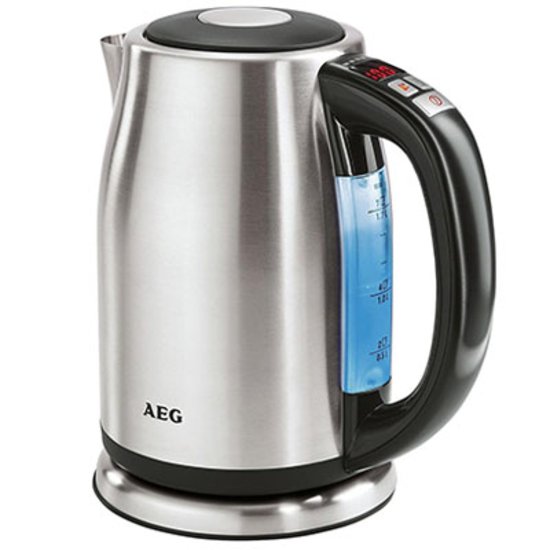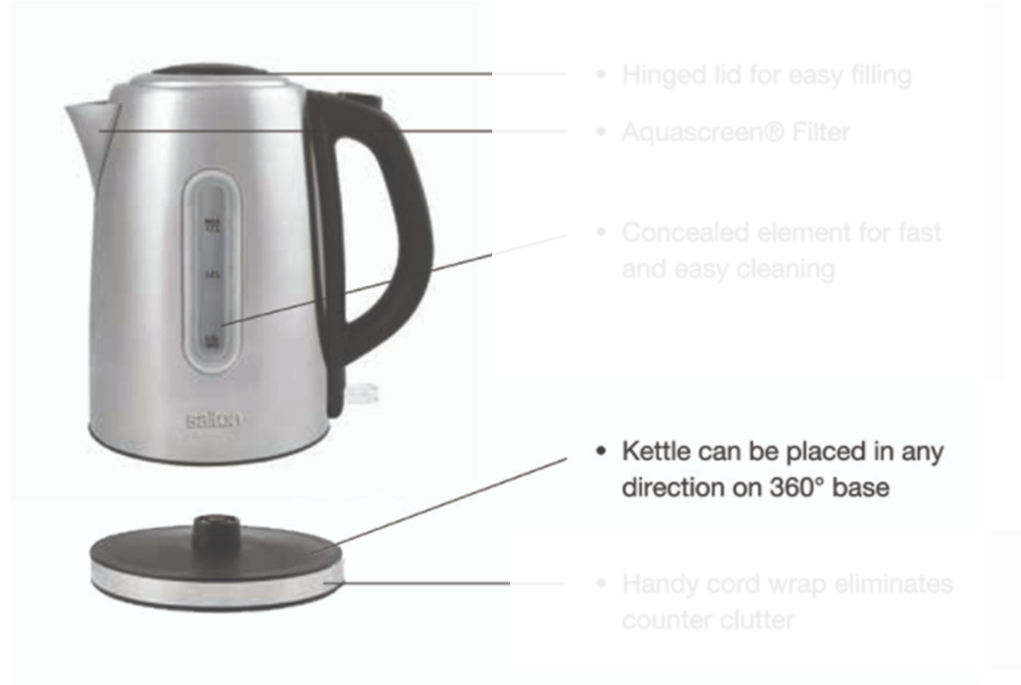Requirements Specification – Water cooker
| ID: RS-WaCo-789 Revision: 07 Revision date: March 22, 2021 Revision status: released |
Introduction

The System-of-Interest for this specification is a water cooker. The specification is intended for system-level requirements. The system (or product) is treated as a black box. In this specification the term system is used for the product. All requirements in this specification use the abbreviation WCS for Water Cooker System.
In the Requirements Analysis is stated that the main function of the WCS is “to bring water to the boil“.
Requirements are based on the ⌊Requirement template⌋.
Conditions
[CND-001] Normal operating conditions
The normal operating conditions for the product are:
- temperature range: 5°C to 40°C
- humidity range: 30% to 95%
Requirements
System-level main function: “bring water to the boil”
Requirements in this section specify properties of the main function.
For all requirements condition [CND-001] applies.
| REQ-001 | boiling speed performance |
| The WCS shall bring 600 ml of water at room temperature to the boil within 3 minutes | |
| Conditions | [COND-001] |
| Sources | [UC-789], [UC-876] |
| Status | draft |
| Version, revision | 3.14 |
| REQ-002 | electric energy resource |
| The WCS shall use no more than 100Wh to bring 600 ml of water at room temperature to the boil within 3 minutes | |
| Conditions | [COND-001] |
| Sources | [UC-789], [UC-876], [analysis: electric energy] |
| Status | draft |
| Version, revision | 1.2 |
System-level secondary function: “maintain water temperature“
Also called product features, Kunden erlebbaren Funktionen.
| REQ-003 | rotatable cooker body |
| The WCS can be rotated on its base | |
| Conditions | [COND-001] |
| Sources | [AS-001] |
| Status | draft |
| Version, revision | 1.2 |
Constraints, pre-conditions, standards
| REQ-004 | applicable standard: IEC 60335-1 |
| The WCS shall comply to the safety standards for household appliances IEC 60335-1 | |
| Conditions | [COND-001] |
| Sources | [AS-002] |
| Status | released |
| Version, revision | 1.1 |
Annex A: Requirements Analysis
Stakeholder needs on “ease of use”
A number of stakeholder needs refer to ease of use as an important quality of the product. In this section the analysis is described how these stakeholder needs are interpreted.

Several models (also from competitors) show a base that includes the power cord, on which the kettle rest be positioned in any direction. Customers consider this feature to be very pleasant. Also considering some safety aspects: the kettle is automatically detached from the power source once it is lifted from the base.
Applicable standards
Electric energy consumption benchmark
How much does it cost to boil the kettle? (from: Canstarblue Australia)
Boiling an electric kettle costs 4 to 5 cents, depending on the size of the kettle and the rate you pay on electricity. Most commercial kettles range in size from 1.5L to 1.8L, with the larger kettles intuitively consuming more electricity. Kettle power will also vary between 2000W and 2400W, however this is much less important as you will soon see below.
To calculate the real running cost of a kettle, we must first work out how long a kettle will take to boil given its size and power. The below table assumes the kettle is filled to its maximum recommended capacity and the beginning water temperature is 20°C.
| 1.5L | 1.6L | 1.7L | 1.8L | |
|---|---|---|---|---|
| 2000W | 4m 12s | 4m 29s | 4m 46s | 5m 2s |
| 2100W | 4m 0s | 4m 16s | 4m 32s | 4m 48s |
| 2200W | 3m 49s | 4m 4s | 4m 19s | 4m 35s |
| 2300W | 3m 39s | 3m 53s | 4m 8s | 4m 23s |
| 2400W | 3m 30s | 3m 44s | 3m 58s | 4m 12s |
The wattage of a kettle refers to how much energy it will consume within one hour. So a 2200W, for example, will consume 2200W in one hour (or 2200Wh/2.2kWh). However, as we calculated above, it only takes 3-5 minutes to boil a kettle, meaning it’s only consuming a fraction of electricity.
To elaborate, let’s take a 1.7L, 2200W kettle. When full, this kettle will take 4 minutes, 19 seconds to boil. In that period of time, the kettle will use 158.3Wh or 0.1583kWh of electricity. If you are charged 28.7c/kWh for electricity, then this means that boiling the kettle has just cost you 4.55c.
![]()
